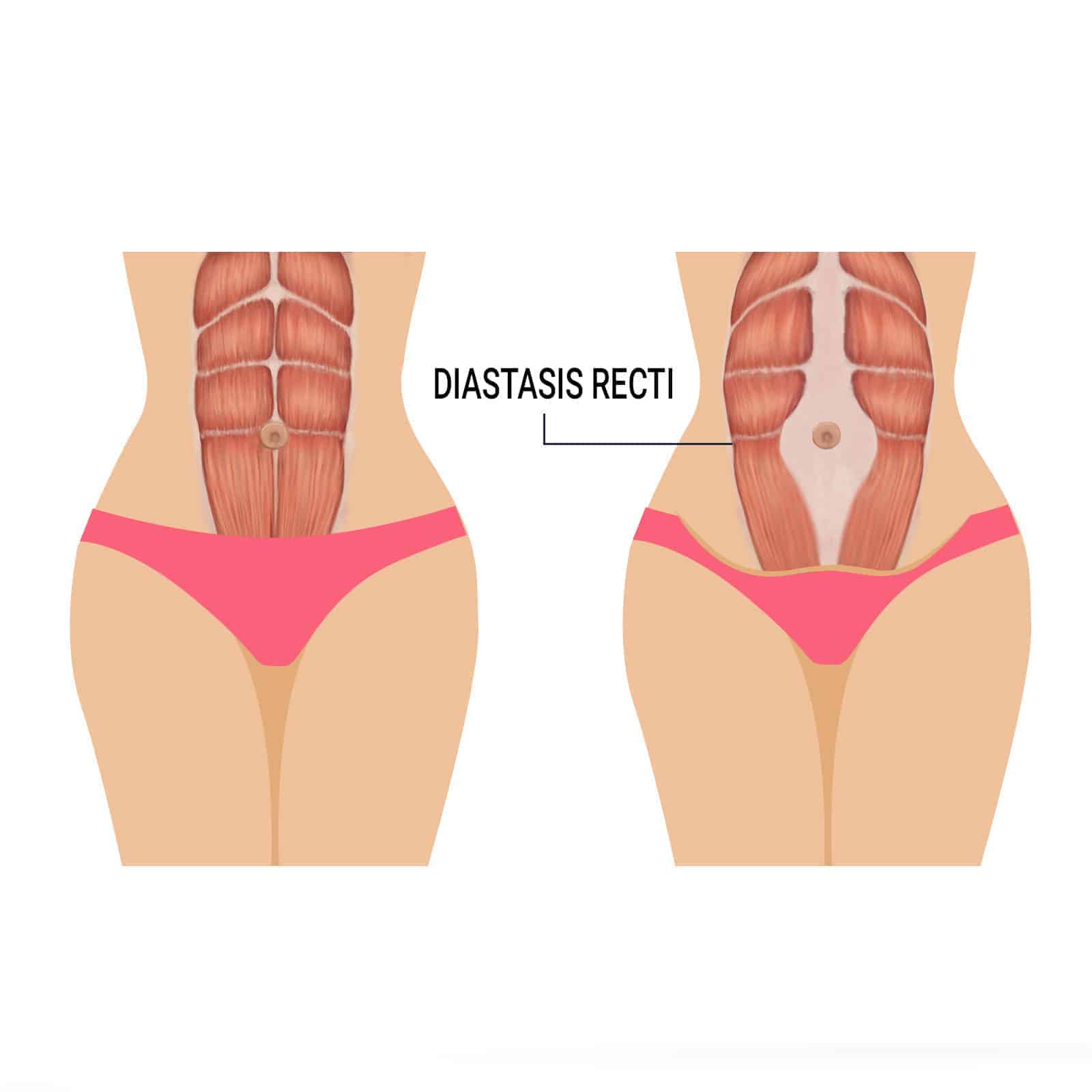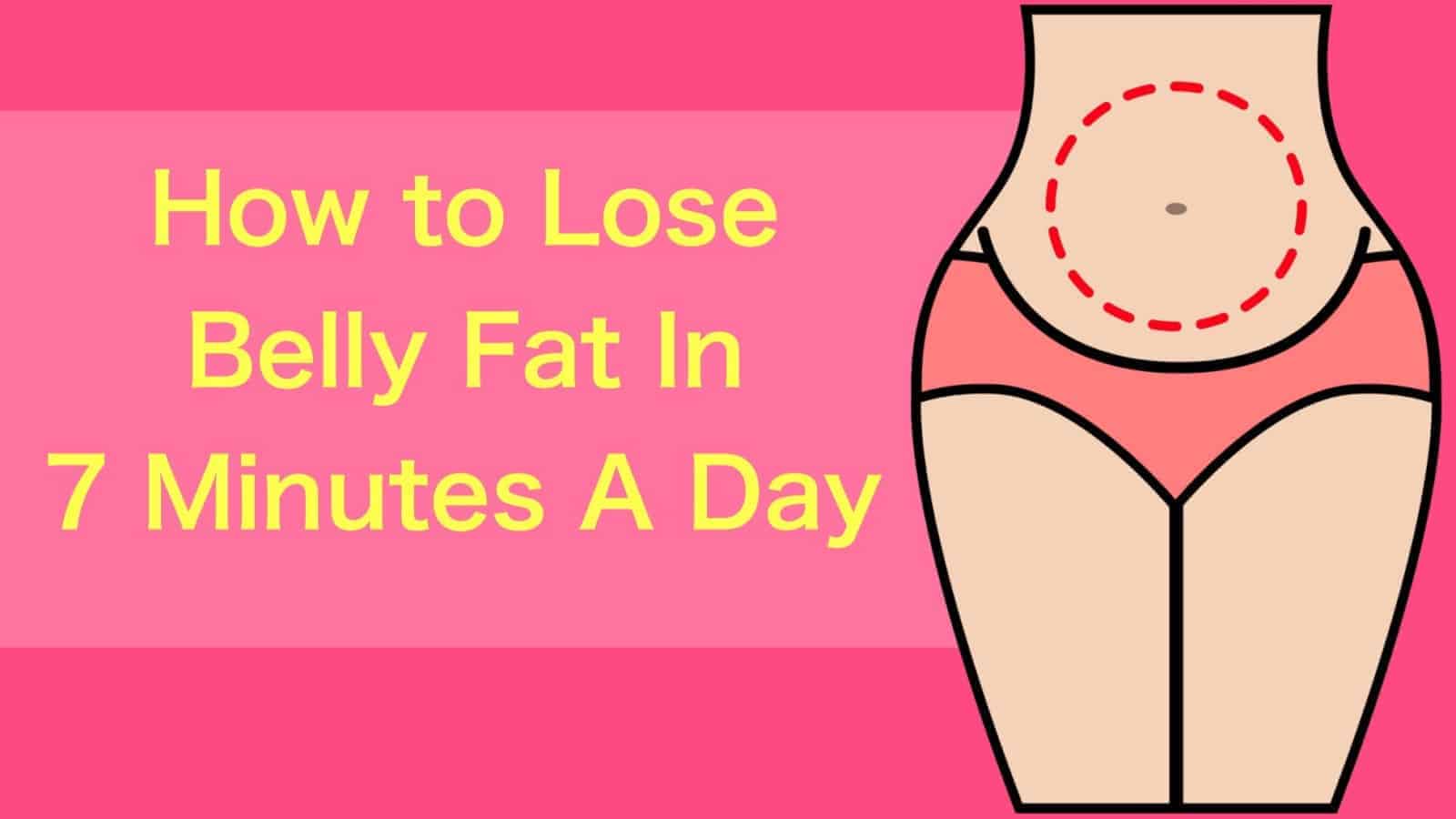Don’t let the sophisticated name fool you: diastasis recti (pronounced “dye-uh-stas-is rec-tie”) is very straightforward and familiar, particularly among pregnant women. It’s estimated that 2 out of every 3 women who become pregnant will develop the condition.
“‘Diastasis recti’ means your belly sticks out because the space between your left and right belly muscles has widened. You might call it a ‘pooch.’” ~ WebMD: Abdominal Separation (Diastasis Recti)
Diastasis means separation and the word ‘recti’ refers to your ab muscles, or the “rectus abdominis.” This is precisely what diastatic recti is: separation of your ab muscles.
‘D. recti’ can also affect newborn babies and men, with the latter mainly acquiring the condition from fad dieting or from performing incorrect weightlifting techniques. But primarily, d. recti affects women during pregnancy when excess belly pressure from the extra weight causes the ab muscles to lose their shape. This extra pressure usually results in a protrusion around the mid-abdominal area. Per the Mayo Clinic:
“During pregnancy, the growing uterus … can cause the two large (bands) of muscles that meet in the middle of the abdomen to separate … Diastasis recti might cause a bulge in the middle of the abdomen where the two muscles separate.”
A couple of other factors can increase the likelihood of developing d. recti: having a child after age 35, delivering twins/triplets, and giving birth to more than one child throughout life.
In the medical community, and even among post-partum mothers, diastasis recti isn’t often mentioned. Part of the reason, understandably, is that women are hesitant to share information about what they consider private matters. Another reason is that many post-partum women are unaware as to just how prevalent – and potentially serious – this condition is.
A Woman’s Wisdom
The truth is that no physician, however intuitive and smart, can replace a woman’s instinct regarding her own body. Fortunately for us, women who’ve had troubles with the condition shared their story – and gave some invaluable advice.
With regards to her experience, the woman says:
“During my pregnancy with my first child, I continued doing abdominal specific exercises like crunches … I thought it would (help) my body stay fit and recover more quickly after pregnancy,” but, the woman adds, “… it did the opposite, and I noticed after that pregnancy that my stomach didn’t regain its previous ‘flatness.’”
While obstetricians and gynecologists do not consider d. recti to be a serious and threatening condition, it can cause problems.
Here are the three main signs of Diastasis Recti:
1. Constipation
Diastasis recti creates a continuous, heavy pressure in both the pelvic floor and the abdominal wall, causing strain between the upper and lower intestines. This extra pressure on these two areas may both cause and worsen constipation symptoms.
Per the Mayo Clinic, symptoms of constipation include:
- passing fewer than three stools a week.
- having hard or lumpy stools.
- straining to have bowel movements.
How to Fix: Constipation may be fixed by making some small adjustments to diet. First, try incorporating more probiotics to encourage digestion. Fermented foods such as yogurt and sauerkraut are excellent sources.
Second, consider taking a magnesium supplement. Magnesium draws more water into the stool, which softens the texture and makes them easier to pass. It is also a muscle relaxant, so it may help relieve tension along the intestinal wall.
2. Lower back pain:
Per Minnesota’s Sport and Spine Physical Therapy Practice, lower back pain is a common complaint among those with d. recti. The lower back is separated by abdominal muscles. Therefore, any separation or weakness of these muscles may cause chronic lower back pain.
As with constipation, d.recti can be either cause or worsen the symptoms of lower back pain.
How to Fix: First, if you suspect that you’re affected by d. recti, it is important to ask your obstetrician for a quick check. If your instincts prove to be right, they’ll give you some preventative advice.
Second, it is essential to avoid lifting heavy objects or remaining on your feet for extended periods. Also, refrain from extreme bending and twisting of your torso. Finally, make it a priority to practice daily stretching.
3. Poor posture
Abdominal muscles are important to keeping our torso upright. Therefore, weakening of the tummy muscles can affect the ability to maintain a good posture.
D. recti inevitably affect the abdominal muscles most during the late stages of pregnancy. During this time, these muscles may not be able to contract, leading to a structural misalignment and poor posture. Pregnant women report the postural effects of d. recti most commonly during the second or third trimester.
How to Fix: It’s essential to have proper alignment and posture both during and after pregnancy. Maintaining both helps to strengthen your body’s core functions and decreases aches and pains. Therefore, remind yourself to stand tall and engage your core muscles.
As always, ask your obstetrician for personalized advice. Commonly dispensed advice includes:
- avoid looking down
- don’t lock your knees
- occasionally engage your core while sitting or standing




















